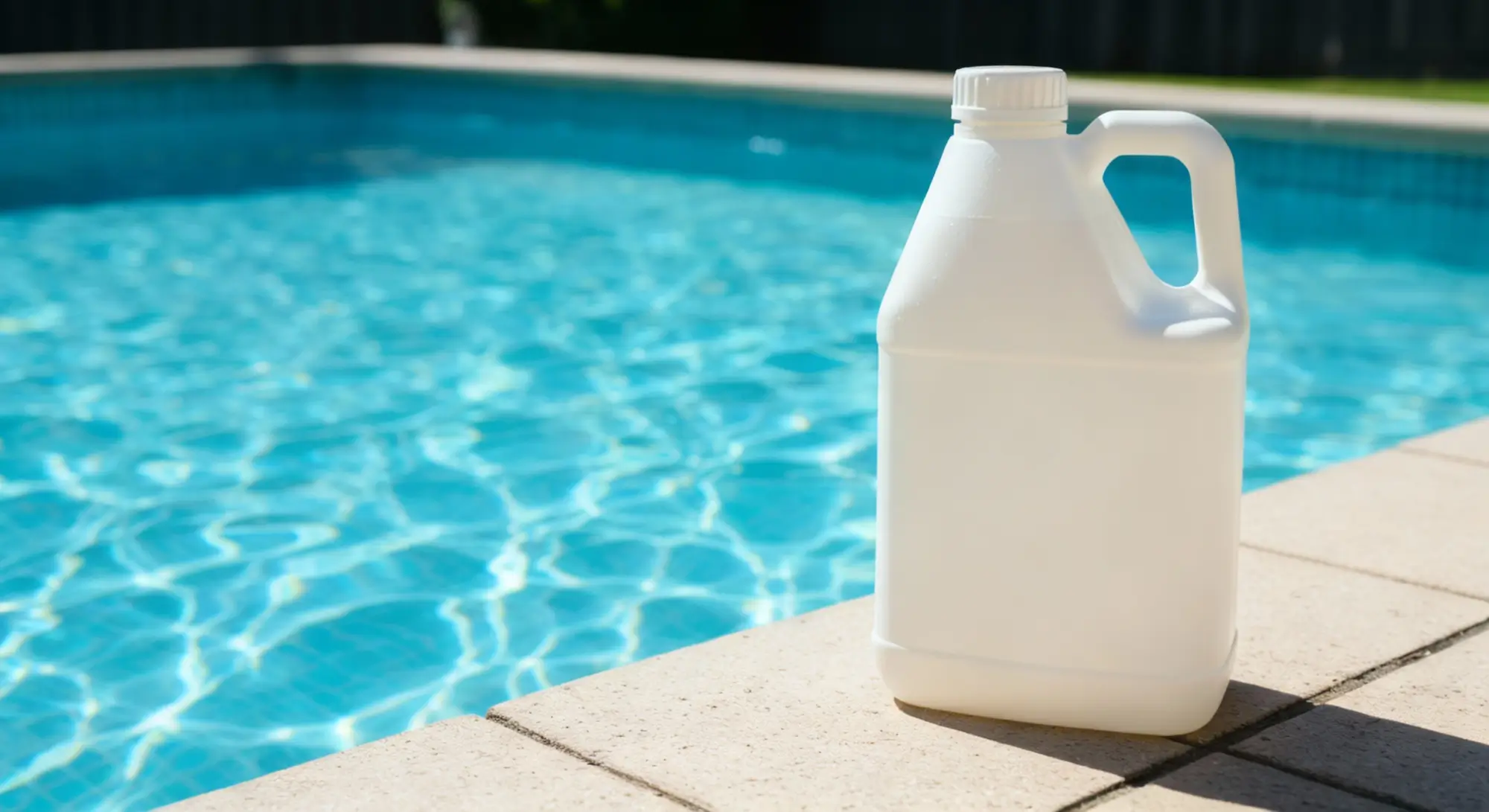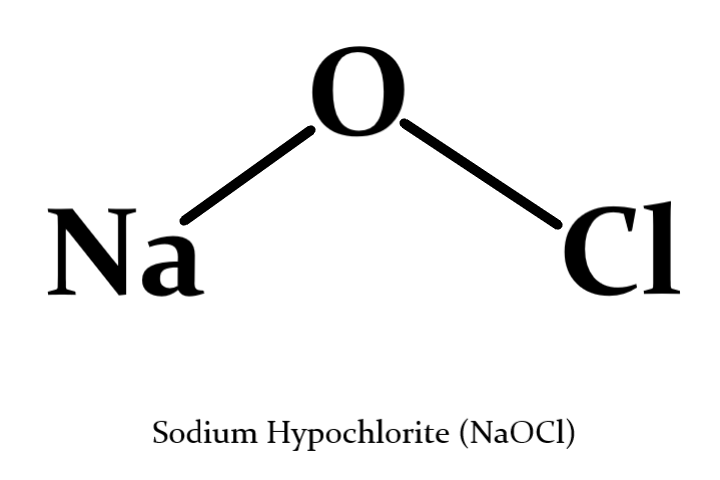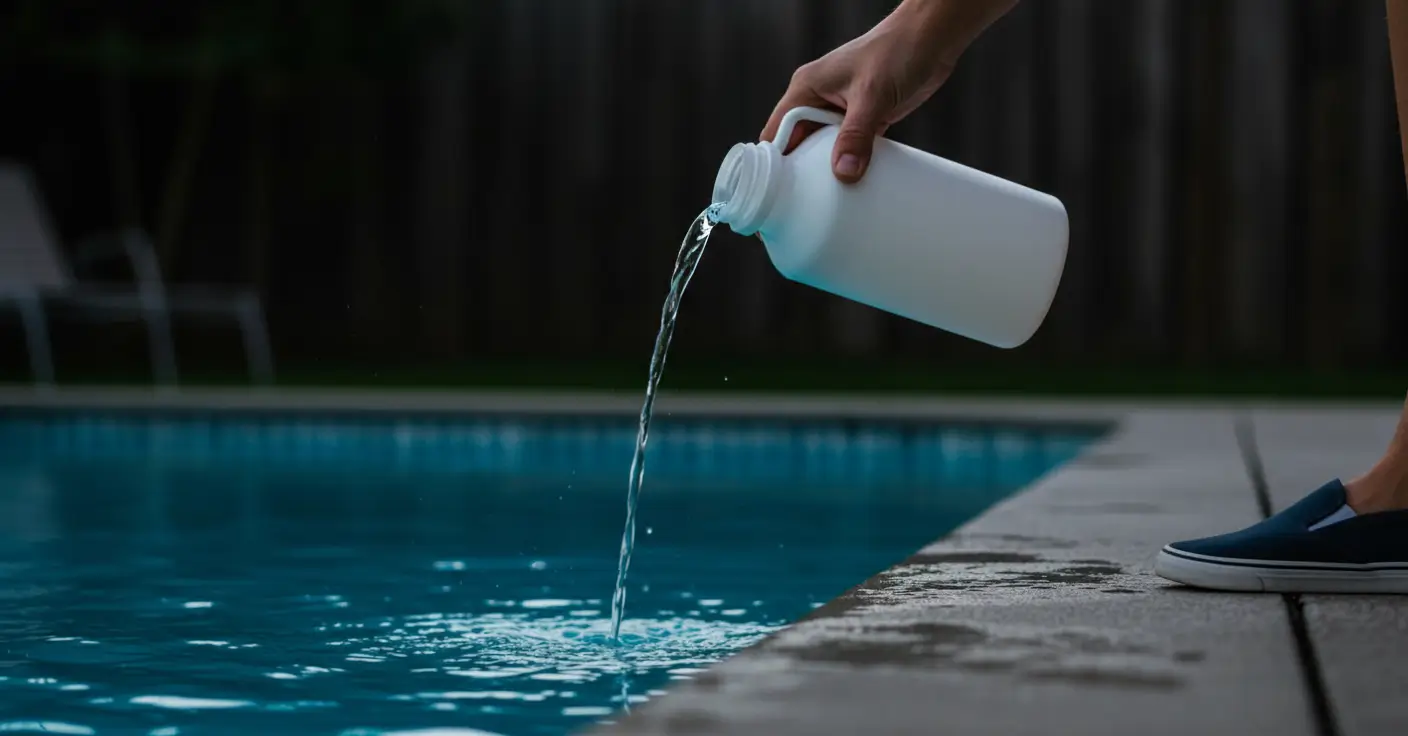What Is Sodium Hypochlorite? A Complete Guide for Pool Owners

Most pool enthusiasts simply refer to it as “liquid chlorine.” You grab a jug, dump some in, and the water looks fine. Simple, right? Well, not precisely. Sodium hypochlorite, a potent substance that can either be your greatest ally or your worst headache, is actually in that jug.
It eliminates cloudiness, stops the growth of algae, and kills bacteria when used properly. Used the wrong way? You’re looking at stinging skin, weak chlorine that stops working, and a pool that feels more like a science project gone wrong.
This guide lays it out without the jargon. We’ll cover what sodium hypochlorite actually is, why you should care, and the simple way to use it so your pool stays clear without the stress. Stick with me till the end, and you’ll know how to keep your water safe and skip the common mistakes that give other pool owners a headache.
Sodium Hypochlorite Explained: The Science Behind Your Clean Pool
Sodium hypochlorite (NaOCl) sounds complicated, but it’s simply the liquid chlorine used in pools. It’s clear, sometimes slightly yellow, and known for killing germs fast. Outside of pools, hospitals, and water treatment plants rely on it for disinfection.
When sodium hypochlorite is added to water, it forms hypochlorous acid (HOCl) and hypochlorite ions (OCl⁻), which act as disinfectants by breaking down microbial cell walls. It also cleans body oils and sunscreen, so your pool water looks clear and bright.

One thing to know: Sodium hypochlorite pushes the pH level higher. If you don’t balance afterwards, the chlorine won’t be as effective. That’s why testing before and after matters.
If you’re curious about how the pros use it in drinking water, the Australian National Health and Medical Research Council (NHMRC) has detailed guidelines.
How to Use Sodium Hypochlorite in Your Pool Safely: A Step-by-Step Guide
Adding chemicals is not “pour and hope.” The amount and timing matter. Here’s a safe way to do it.
Step 1: Check Water Chemistry
According to the Australian National Health and Medical Research Council (NHMRC), maintain free chlorine levels at 1–3 ppm, pH between 7.2–7.6, and total alkalinity at 80–120 ppm. Testing these parameters before adding sodium hypochlorite ensures effective sanitation and swimmer safety.
Step 2: Calculate Dosage
Add sufficient chlorine. If in excess, it may cause itchiness or make the pool stink. If too less, it leads to algae growth. Use a standard test kit or a smart water monitor for fast and accurate readings.
Step 3: Pour Gradually
Slowly pour in the solution while moving around the pool. To avoid deterioration from sunlight, it is preferable to apply the chemical in the evening.

Step 4: Safety Measures
- Put on personal protective equipment (PPE) to stay safe.
- Sodium hypochlorite should never be combined with other chemicals as this could result in the release of a hazardous gas.
- Keep the solution somewhere dark and cool: Store sodium hypochlorite in a cool, dark place, away from direct sunlight. Exposure to heat or light accelerates chlorine degradation. Avoid mixing with other chemicals such as acids or ammonia, which can produce toxic gases.
That’s the whole routine. Quick, simple, and safe.
Sodium Hypochlorite vs Bleach: Are They the Same?
Household bleach contains sodium hypochlorite, but it's diluted and sometimes has other components. Short answer: no.
|
Feature |
Pool-Grade Sodium Hypochlorite |
Household Bleach |
|
Concentration |
Higher (Typically 10-15%) |
Lower (Typically 3-6%) |
|
Additives |
Formulated specifically for pools |
May contain soaps, scents, etc. |
|
Recommended Use |
Ideal for pool sanitation |
Not recommended for pools |
Bleach from the store just isn’t strong or pure enough for pool care. Stick to products made for swimming pools if you want consistent results.
Note: Concentration refers to the percentage of active chlorine. Pool-grade products are formulated for effective sanitation, while household bleach is not recommended for pool use.
Beyond Chemicals: The Importance of Physical Cleaning
Chemical balance alone isn’t enough for crystal clear water. Physical cleaning is equally crucial to maintain pool hygiene. Chlorine alone can’t handle everything. Leaves, dirt, and sunscreen oils all pile up, and they eat away at chlorine’s power. That’s why brushing and vacuuming matter as much as chemical balance.
The easiest way? Let a robot do it. The Aiper Scuba X1 Pro Max takes care of the floor, walls, and waterline. It clears out debris before it turns into bigger problems. When chemistry and cleaning work together, your water stays clear with less effort.
Common Questions About Using Sodium Hypochlorite (FAQ)
The following are the answers to some quite common questions about sodium hypochlorite uses.
Q1. What do people usually call sodium hypochlorite?
Most call it liquid chlorine. It’s also the base ingredient in bleach.
Q2. How is pool chlorine different from regular bleach?
Bleach is weaker and sometimes has additives. The liquid pool chlorine is stronger and cleaner.
Q3. Can people safely swim in water treated with sodium hypochlorite?
In pool water at proper levels, yes. In concentrated form, no, always wear gloves and goggles.
Q4. Are there things you should never mix with bleach?
Never mix with ammonia or acids. Both create toxic gases.
Q5. What problems or downsides come with using sodium hypochlorite?
It loses strength if stored in heat or light. It can also raise pool pH, so you’ll need balancing chemicals.
Conclusion
Sodium hypochlorite is the backbone of pool sanitation. It clears out germs, keeps water sparkling, and makes swimming safe when used with care. Testing first, measuring right, and applying in the evening all make a big difference in pool chemical safety. So does safe handling and smart storage.
Chemicals, though, are only half the story. Debris must also be removed, or chlorine becomes overworked. That’s where smart gear comes in. At Aiper, we design monitors and robotic cleaners that take the hassle out of pool care. With the right mix of knowledge and tools, you’ll spend less time fixing your pool and more time enjoying it.

